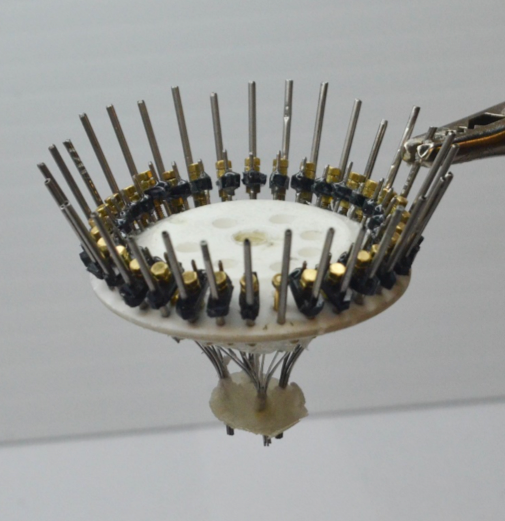Techniques
All of our implants are made in house and are fully customizable. We record using Intan Technologies acquisition boards and headstages, and open source Open Ephys Software.
Our lab specializes in massive multisite neuronal recordings. Our main concentration is on the ACC, but we also record from dorsal CA1, the VTA, retrosplenial cortex, and the dorsal striatum. Multisite recordings allow us to record large numbers of single neurons and field potentials simultaneously in these different brain areas.
This recording method allows us to examine information encoding in these different areas, as well as discover how information flows between areas, and in general how these areas interact during our diverse array of behavioral tasks.

Acronyms: initial trial interval (ITI), nose poke (NP), feedback send delivery (FS)










